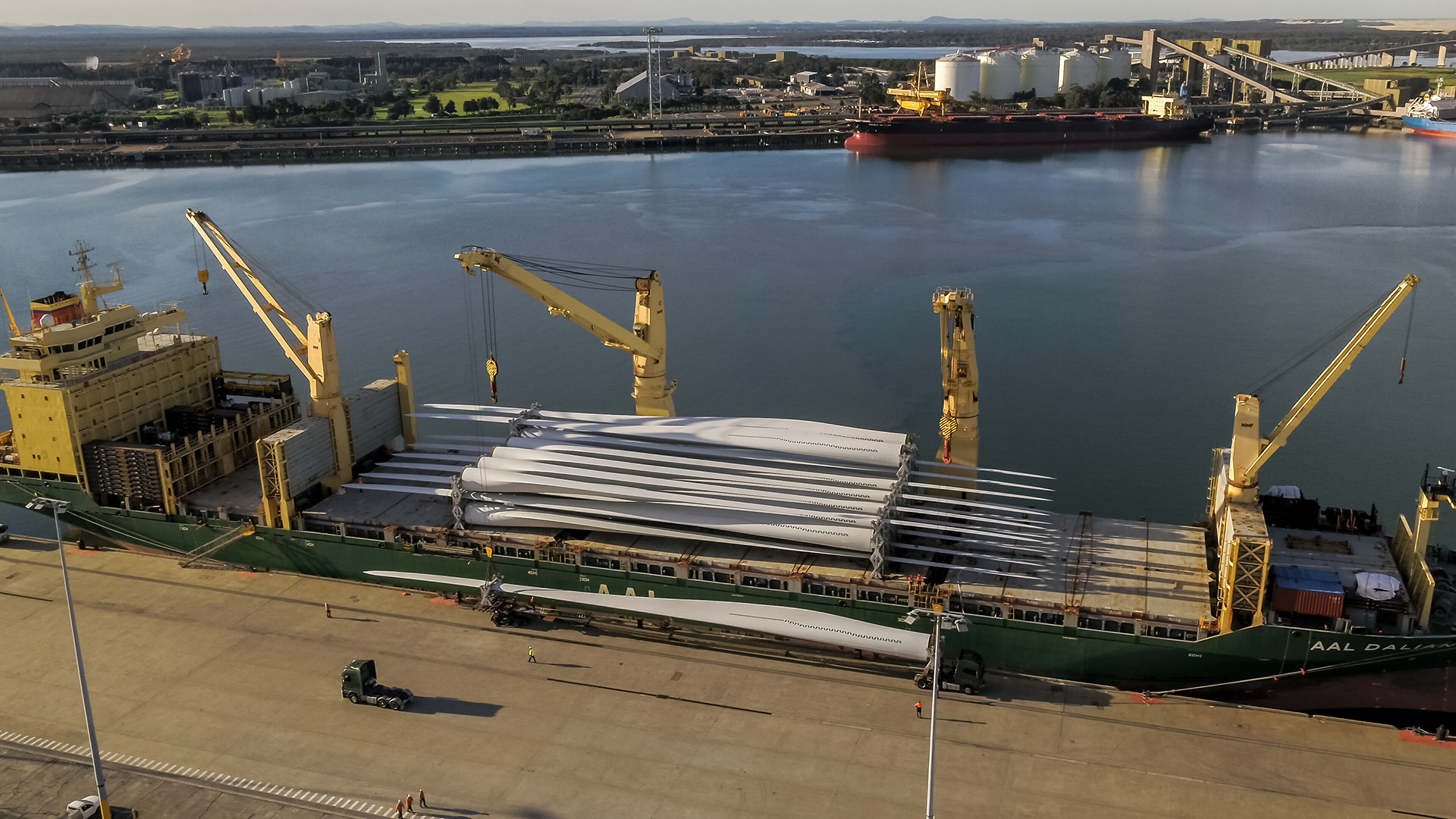
Newcastle has again demonstrated its role as a critical trade gateway for Australia’s take-up of renewable energy technology, with the latest batch of wind farm components set to arrive in the next week.
More than 200 wind turbines have been imported through Port of Newcastle over the past four years and this number is set to grow a further 25% this year with the arrival of another two shipments aboard specialist project cargo ships, Industrial Strength and BBC Coral.
The 54 Vestas V117-4.2 MW turbines blades will arrive in three pieces and be stored at the Port for several months before being transported almost 500 kilometres by truck to the project site in Collector, located about halfway between Goulburn and Canberra.
The on-site storage – a unique advantage at Port of Newcastle compared with other ports – reduces double-handling of cargo and unnecessary truck movements in regional NSW.
Construction on the 226.8MW Collector Wind Farm began in May 2019 and is expected to be completed in 2021, with the supply chain a product of collaboration between turbine manufacturer Vestas, heavy haul logistics group Rex J Andrews, independent power producer and project owner RATCH-Australia and Port of Newcastle.
Upon arrival at the construction site, each turbine will be assembled to its full height of 150 metres to the tips of the blades.
Collector Wind Farm will produce enough safe, clean, reliable electricity to power up to 80,000 homes on average each year.
RATCH-Australia’s Collector Wind Farm is one of many renewable energy developments under construction across the state as the Berejiklian Government pushes towards net zero emission energy by 2050.
Port of Newcastle CEO Craig Carmody said the growing wind farm import trade was one element of the Port’s sustainability plans.
“Port of Newcastle is diversifying its trade as it strives to create a safe, sustainable and environmentally and socially responsible Port that realises its potential,” Mr Carmody said.
“We have further grown the wind farm importation trade since receiving components for the White Rock Wind Farm in late 2016.
“When the Collector project comes online, Port of Newcastle will have helped facilitate the import of 269 wind turbines, generating enough renewable energy to power about 374,000 homes each year.
“This important trade is only possible due to the work of specialist heavy haul logistics providers, who have the complex task of transporting oversized components from the country of manufacture to wind farms across regional New South Wales.
“Port of Newcastle is pleased to be providing the ocean gateway for this trade, which is aligned with our vision to remain a world-leading energy port through facilitating new and existing forms of energy.”
Vestas’ Australian Wind Technology Project Manager Construction, Ajay Pancholi, said the company selected Port of Newcastle because the ample amount of storage space required for turbine components was available close to the arrival berth.
“The Collector Wind Farm project is progressing well and will commence installation of turbines by end of March 2020,” Mr Pancholi said.
Rex J Andrews Operations Manager Warrick Andrews said the company was proud to be contributing to the take-up of renewable energy through its logistics support for the Collector Wind Farm development.
“The Rex J Andrews and Port of Newcastle teams both pride themselves on being able to offer flexible, tailored logistics services for customers that support the supply chain needs of large-scale infrastructure projects such as the Collector Wind Farm,” Mr Andrews said.
According to the Climate Council, 17.3%* of NSW energy was generated from renewable sources, including solar and wind in 2018.
To date Port of Newcastle has welcomed two shipments of turbine components destined for Collector, with another four shipments expected between now and May.
*The Climate Council’s 2019 renewable energy scorecard
Port of Newcastle
Port of Newcastle is a major Australian trade gateway handling 4,600 ship movements and 171 million tonnes of cargo each year. With its annual trade worth about $25 billion to the New South Wales economy, the Port enables businesses across the state to successfully compete in international markets. With a deepwater shipping channel operating at 50% of its capacity, significant port land available and enviable access to national rail and road infrastructure, Port of Newcastle is positioned to further underpin the prosperity of the Hunter, NSW and Australia. As custodians of the region’s critical asset, Port of Newcastle is diversifying its trade as it strives to create a safe, sustainable and environmentally and socially responsible Port that realises its potential.
